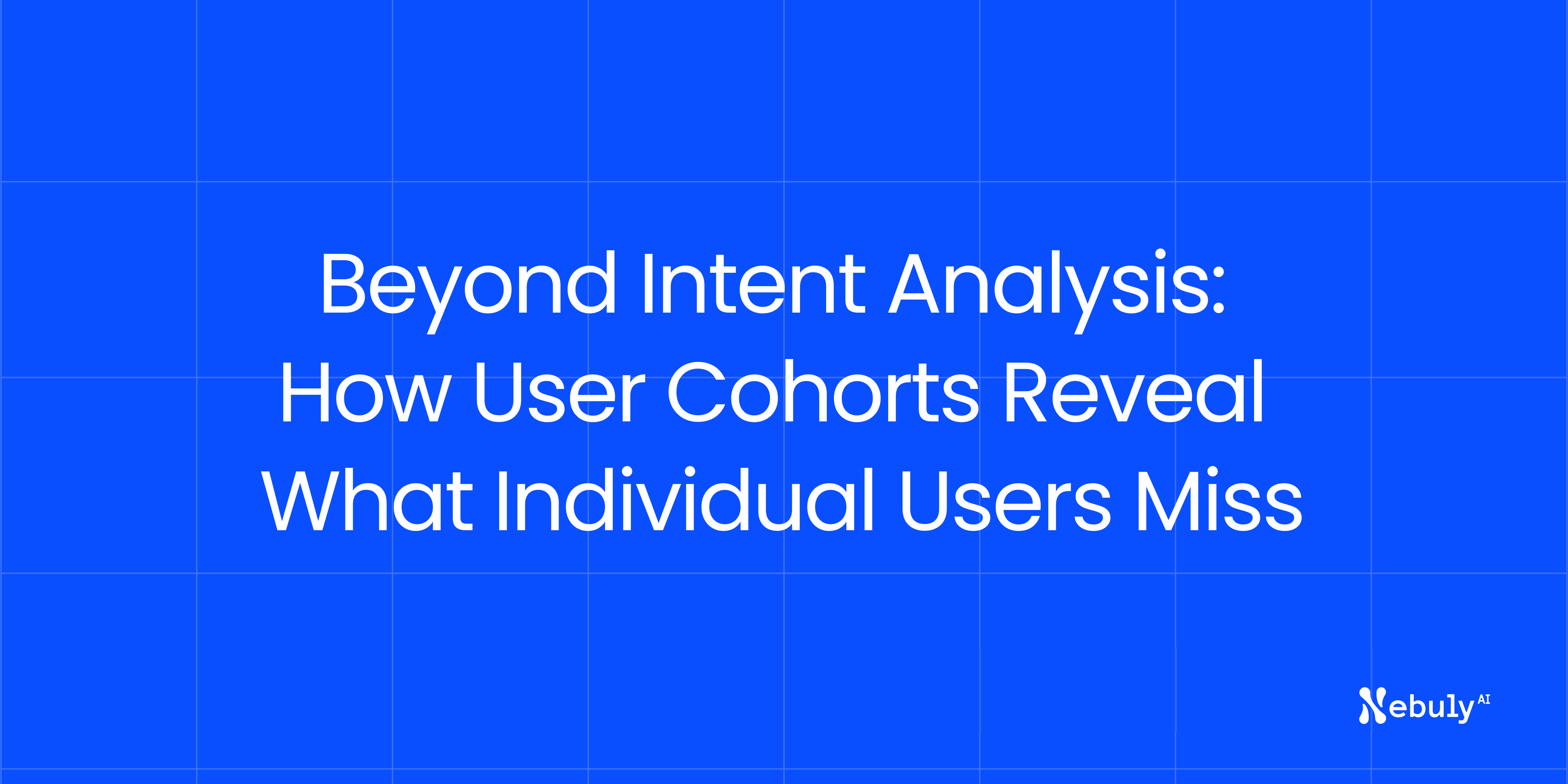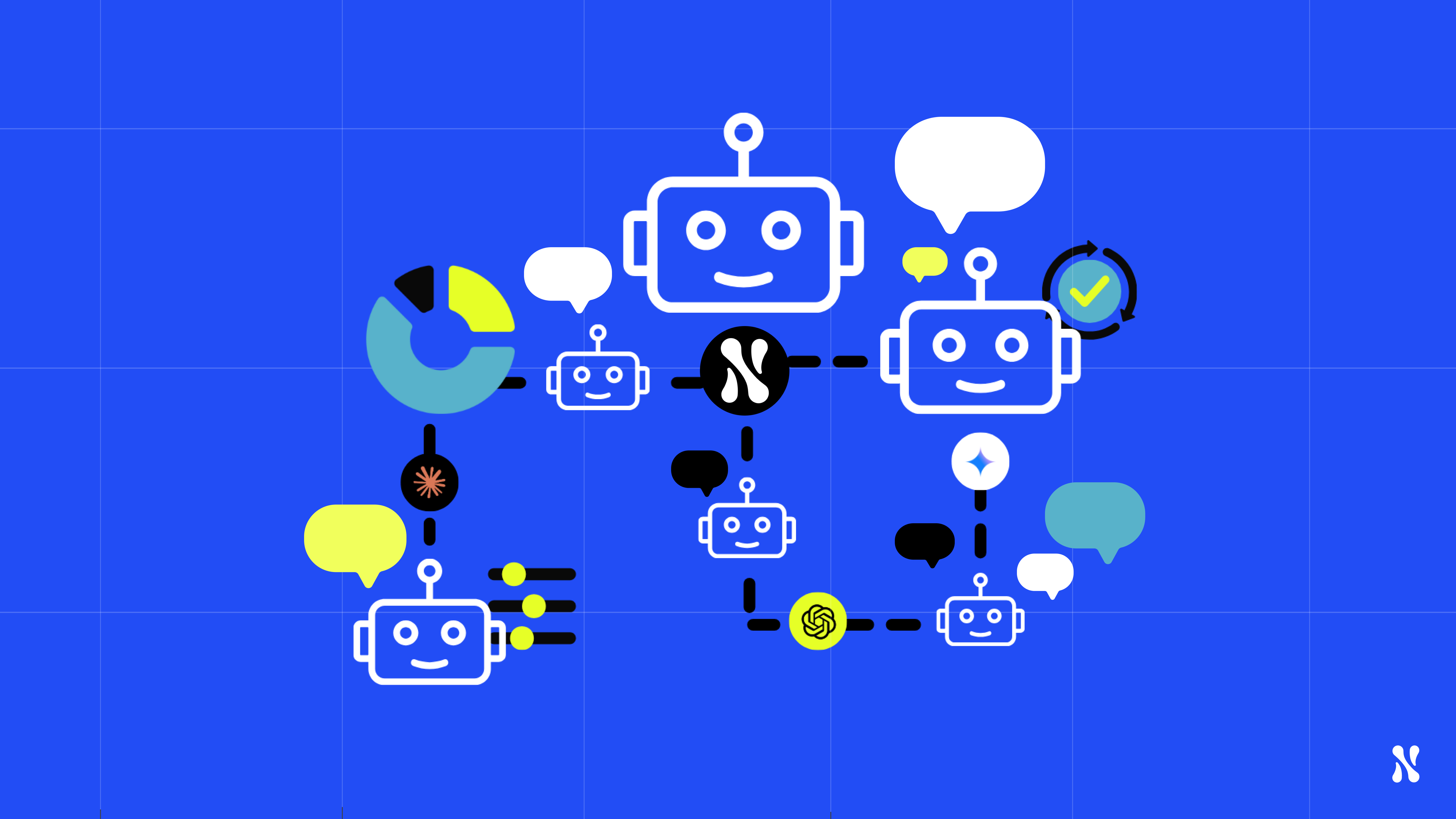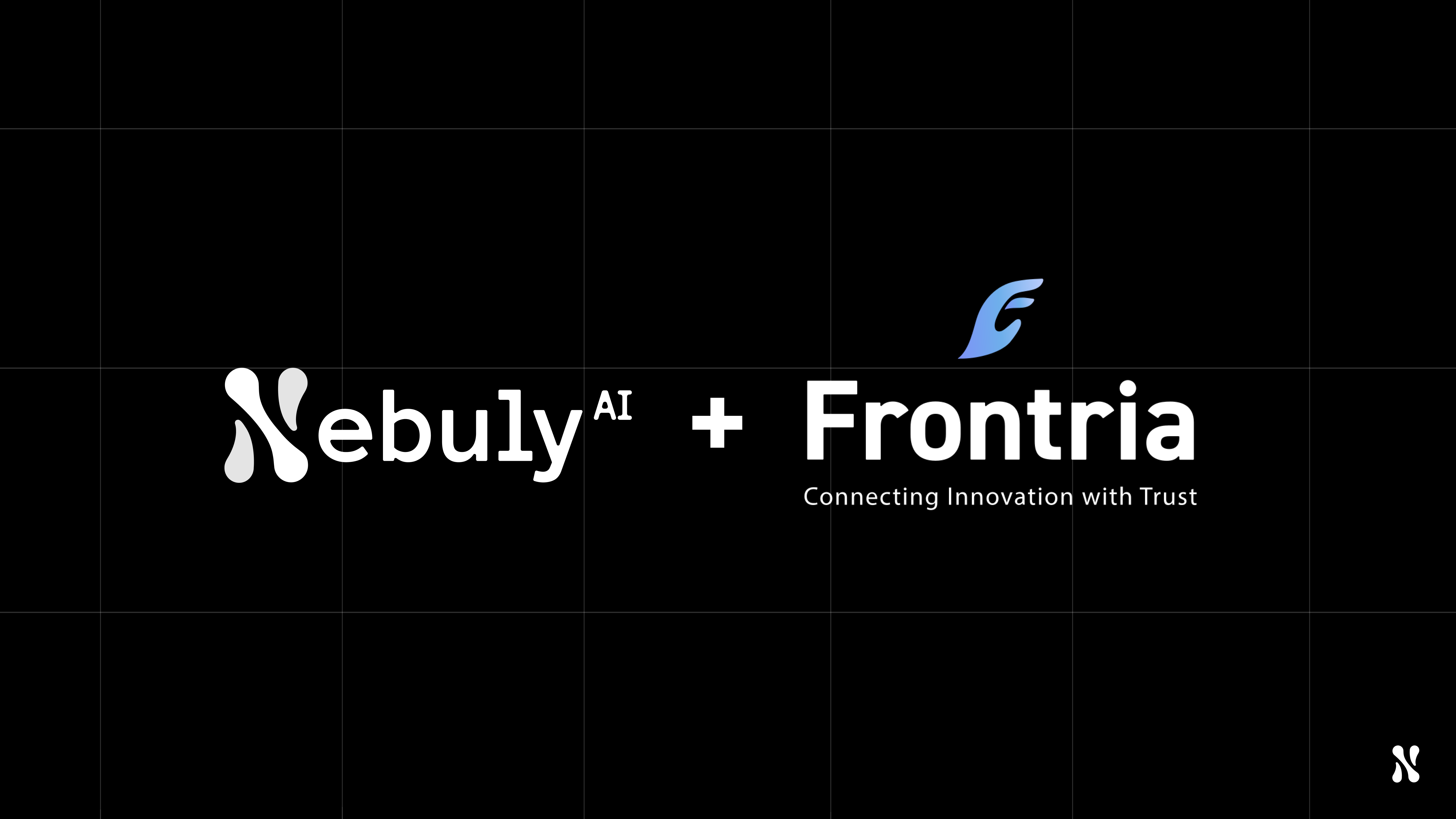Every AI team tracks individual user sessions, conversation flows, and response accuracy. But while you're analyzing trees, you're missing the forest. The most valuable insights about AI adoption come from understanding user groups, not individual users.
User cohort analysis reveals patterns that individual conversation logs simply can't show. It exposes why some teams embrace your AI assistant while others abandon it. It predicts which user segments will scale and which will churn. It guides product decisions based on behavioral archetypes rather than anecdotal feedback.
This is the missing layer of user intelligence that transforms AI products from technical achievements into business drivers.
The Individual User Analytics Trap
When Granular Data Misleads
Most AI analytics platforms focus on granular individual interactions:
- User A asked 15 questions and got 14 good responses
- User B had a 3-minute conversation with 85% satisfaction
- User C dropped off after the second exchange
This data feels comprehensive, but it creates blind spots:
Sample Size Bias: You over-optimize for vocal power users while missing silent majority patterns
Temporal Blindness: You see snapshots but miss how different user types evolve over time
Context Loss: You track behavior but miss the organizational dynamics that drive it
Scale Confusion: You can't distinguish between sustainable adoption and temporary experimentation
The Aggregation Problem
Traditional analytics sum individual interactions into totals:
- "We had 10,000 conversations this month"
- "Average satisfaction score is 4.2/5"
- "Response accuracy improved by 8%"
But aggregated metrics hide the story behind the numbers. Your "successful" AI might be loved by a small group of power users while being ignored by everyone else. Your "improving" metrics might reflect one department's adoption while others remain unchanged.
Understanding the complete picture requires moving beyond basic AI Product Analytics.
What User Cohorts Reveal
The Behavioral Archetypes
User cohort analysis identifies distinct behavioral patterns that individual analytics miss:
The Power Users (15% of users, 60% of interactions):
- Ask complex, multi-step questions
- Use advanced features and integrations
- Provide detailed feedback and feature requests
- Risk: Over-optimizing for this minority while neglecting broader adoption
The Experimenters (25% of users, 20% of interactions):
- Try AI for specific tasks or projects
- Usage fluctuates based on immediate needs
- May abandon if initial experience doesn't meet expectations
- Opportunity: Convert through targeted onboarding and success demonstrations
The Skeptics (35% of users, 15% of interactions):
- Use AI reluctantly or under organizational mandate
- Ask simple questions and expect immediate, perfect answers
- Quick to abandon if system doesn't understand intent
- Challenge: Require confidence-building through consistent, reliable experiences
The Observers (25% of users, 5% of interactions):
- Have access but rarely engage
- May be waiting for organizational adoption signals
- Often influenced by peer success stories and training
- Potential: Largest conversion opportunity through social proof and education
The Adoption Lifecycle Patterns
Individual user tracking shows conversations. Cohort analysis shows adoption journeys:
Week 1-2: The Honeymoon
- High engagement across all cohorts
- Experimentation with different use cases
- Satisfaction driven by novelty and potential
Week 3-6: The Reality Check
- Power Users accelerate usage and complexity
- Experimenters either convert or start reducing usage
- Skeptics begin showing frustration patterns
- Observers remain largely inactive
Week 7-12: The Commitment Point
- Clear separation between adopting and abandoning cohorts
- Power Users become internal advocates
- Successful Experimenters develop consistent usage patterns
- Skeptics either convert through peer influence or formal training, or they churn
Month 4+: The Stability Phase
- Mature usage patterns emerge for each cohort
- Organizational adoption either scales or plateaus
- New user acquisition reflects established cohort dynamics
The Organizational Intelligence Layer
Cohort analysis reveals organizational dynamics that individual user analytics completely miss:
Department-Level Adoption Patterns:
- Engineering teams might embrace AI for code review
- Marketing might resist using AI for content creation
- Sales might use AI inconsistently across team members
- Support might adopt AI gradually based on case complexity
Role-Based Usage Differences:
- Managers use AI for summarization and strategic questions
- Individual contributors focus on task-specific assistance
- Senior executives ask high-level, context-heavy questions
- New employees use AI more extensively for learning and onboarding
Geographic and Cultural Variations:
- Different office locations show varying adoption rates
- Cultural attitudes toward AI assistance affect usage patterns
- Language preferences influence conversation satisfaction
- Time zone differences impact real-time AI interaction success
How Nebuly Makes User Cohorts Actionable
Nebuly's platform uses Tags to create meaningful user cohorts that drive business decisions. Instead of generic user groupings, teams can create cohorts based on Role, Department, Geography, Seniority, etc.
Using department tags, you can measure exactly how much time each team saves through AI assistance, while role tags reveal which positions drive organizational AI adoption - Senior managers might show highest initial adoption but plateau after week 6, and new hires adopt AI faster than experienced employees. Geography tags can expose location-specific adoption challenges. See how a global enterprise used similar cohort analysis to understand their GenAI copilot rollout patterns.
The Technology Behind Tag-Based Cohorts
Dynamic Cohort Assignment:
- Automatically categorize users based on authentication data and usage patterns
- Update cohort membership as user roles or departments change
- Track cohort transitions to identify promotion patterns and organizational changes
Cross-Cohort Analysis:
- Compare performance metrics across multiple tag dimensions simultaneously
- Identify interactions between role, department, and geography factors
- Spot outlier cohorts that need special attention or represent growth opportunities
Predictive Cohort Modeling:
- Use historical cohort patterns to predict new user adoption likelihood
- Identify cohorts at risk of churning based on usage pattern changes
- Forecast organizational adoption success based on early cohort distributions
Building Cohort-Driven AI Products
Product Strategy Through Cohort Lens
User cohorts should drive product development priorities:
For Power Users:
- Advanced features and integrations
- Customization options and workflow optimization
- Direct feedback channels and beta program access
- Nebuly Insight: Track power user engagement through role and seniority tags
For Experimenters:
- Simplified onboarding and quick wins
- Use case templates and guided workflows
- Progress tracking and achievement recognition
- Nebuly Insight: Monitor experiment-to-adoption conversion by department
For Skeptics:
- Reliability improvements and error reduction
- Clear capability communication and expectation setting
- Human handoff options and hybrid workflows
- Nebuly Insight: Identify skeptic concentration by geography and role for targeted training
For Observers:
- Social proof and peer success stories
- Low-risk trial opportunities and sandbox environments
- Training programs and organizational change management
- Nebuly Insight: Use cohort success stories to convert observers in similar roles/departments
Organizational Change Management
Cohort insights inform change management strategies:
Executive Reporting:
- Present adoption progress through cohort evolution dashboards
- Show business impact driven by different user segments
- Predict ROI based on cohort conversion patterns using tag-based analysis
- Identify departments and roles with highest adoption potential
Training Program Design:
- Customize training content for different role and department cohorts
- Focus skeptic training on reliability demonstration for their specific use cases
- Provide advanced workshops for power user cohorts
- Create peer mentoring programs within successful department cohorts
Success Metric Definition:
- Set cohort-specific success criteria based on role expectations
- Track cohort health alongside traditional usage metrics
- Measure organizational adoption maturity through tag-based cohort distribution
- Connect cohort evolution to business outcomes like time saved per role
The Competitive Advantage of Cohort Intelligence
Product-Market Fit Through User Segments
Organizations using tag-based cohort analysis achieve product-market fit faster because they:
Design for Real Users: Build features based on actual role and department behavioral patterns
Optimize for Adoption: Focus on converting the largest addressable cohorts within their organization
Predict Success: Identify early signals of sustainable adoption versus temporary experimentation by cohort
Scale Intelligently: Understand which user segments drive business value and prioritize accordingly
The Network Effects of Cohort Understanding
Cohort-driven AI products create network effects:
- Power Users in senior roles become internal advocates who influence their department cohorts
- Successful department cohorts provide social proof that converts skeptical geography cohorts
- Organizational adoption accelerates as successful cohort patterns spread
- Product improvements benefit from understanding cross-cohort influence within organizational hierarchies
The Future of AI User Intelligence
From Individual Tracking to Behavioral Ecosystems
The next generation of AI user analytics will move beyond individual conversation tracking to behavioral ecosystem mapping:
Multi-Tag Journey Analysis: Understanding how users move between behavioral segments based on role changes, department transfers, and geographic relocations
Cross-Organizational Pattern Recognition: Identifying cohort patterns that predict success across different companies and industries
Predictive Cohort Modeling: Forecasting organizational AI adoption success based on early tag-based cohort indicators
Dynamic Personalization: Adapting AI behavior based on real-time cohort membership determined by user tags
The Organizational Intelligence Revolution
User cohorts transform AI from individual productivity tools into organizational intelligence platforms.
The future belongs to AI systems that understand humans individually and collectively. Organizations that master tag-based cohort analysis will build products that entire companies adopt, because they understand how technology adoption actually works within real organizational structures.
The path from individual users to organizational adoption runs through intelligently tagged user cohorts.
Ready to understand your AI users as groups with specific roles, departments, and contexts? Discover how leading organizations use tag-based cohort analysis to drive AI adoption at organizational scale. Book a demo today






